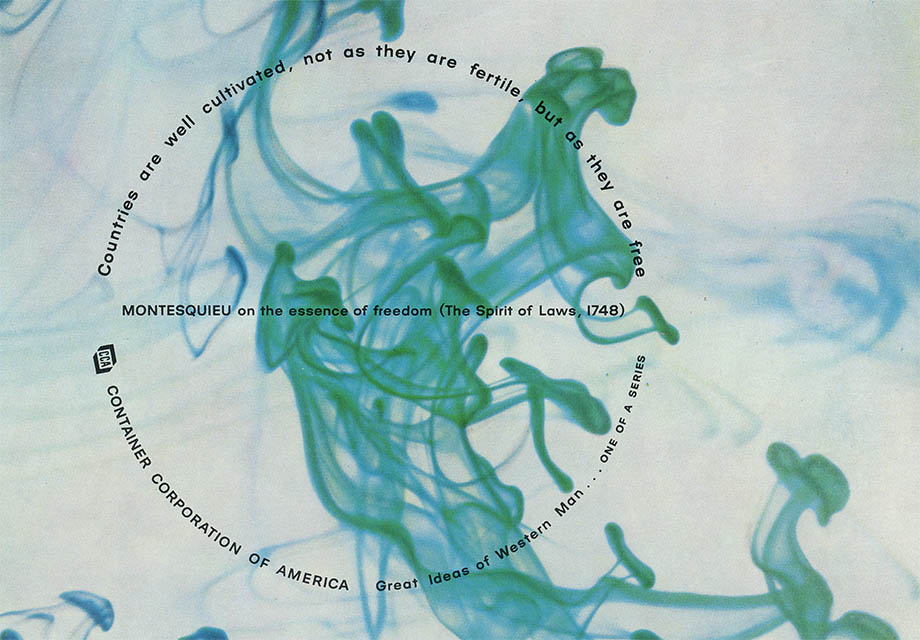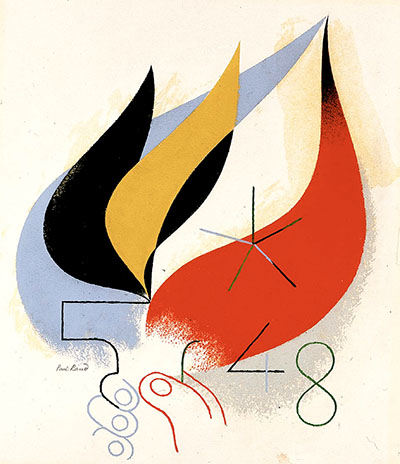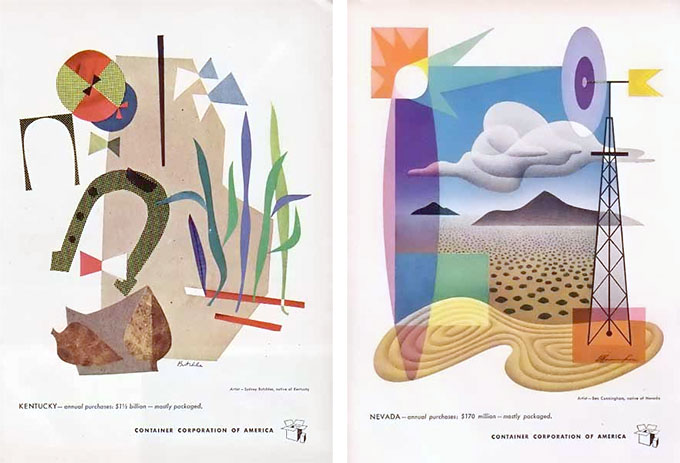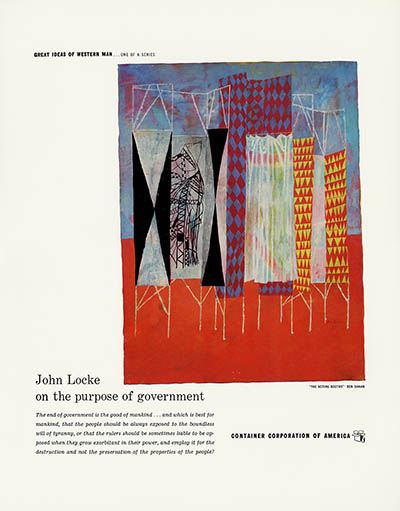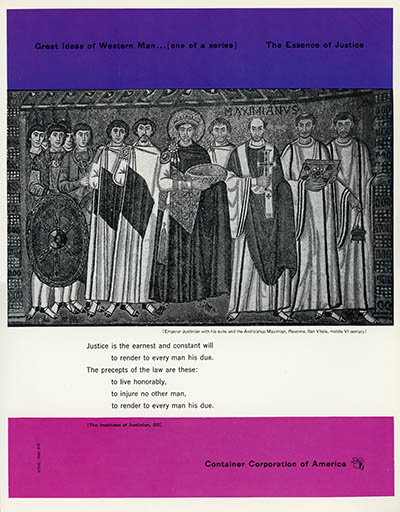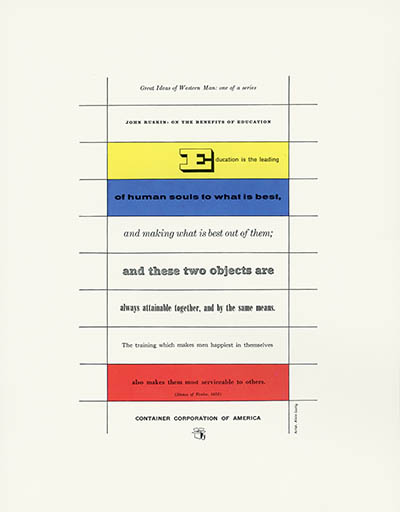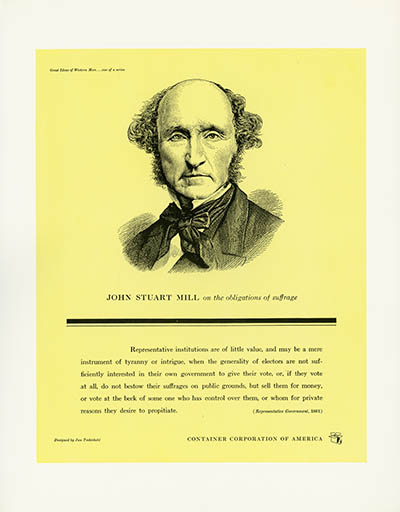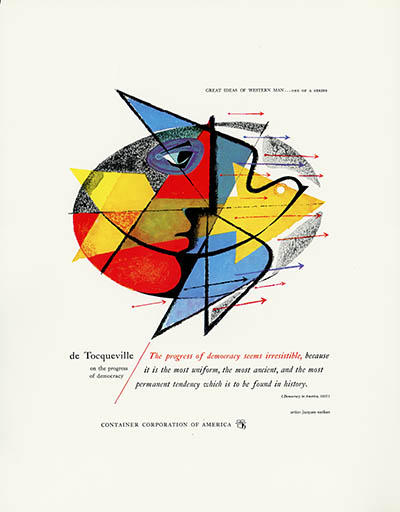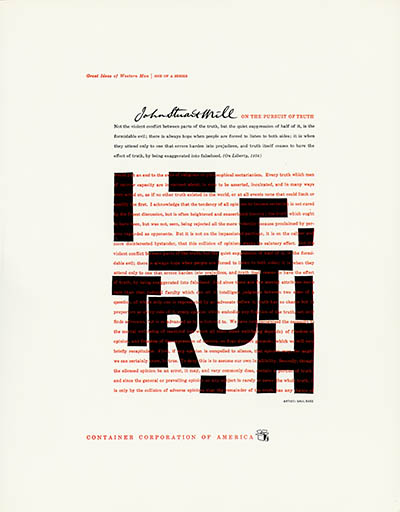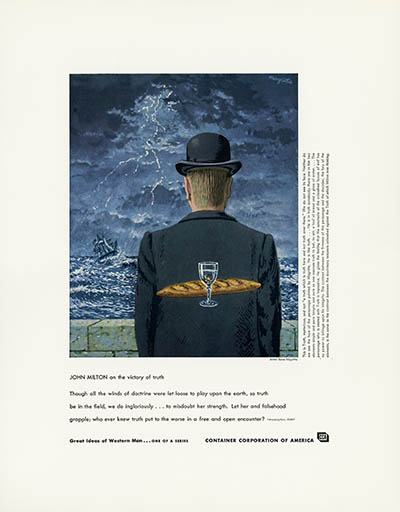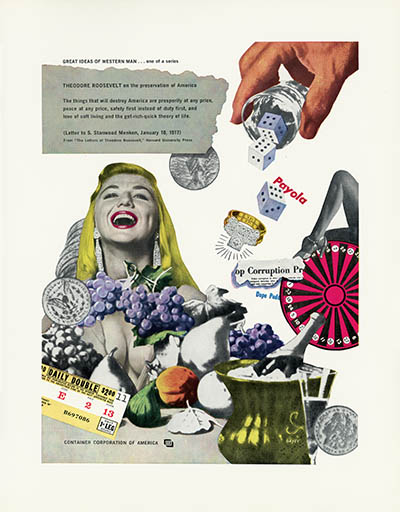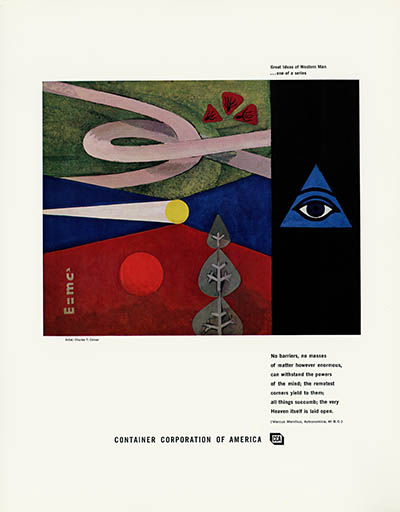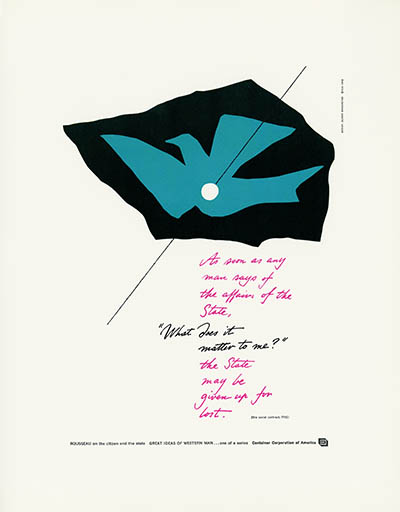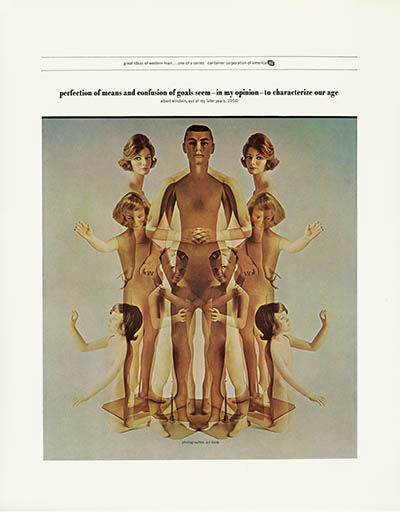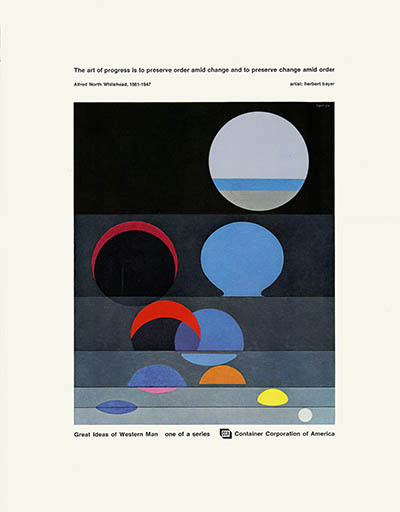No. 105: Herbert Matter on Montesquieu, 1958. From ref. 4
Great Ideas of Western Man
Walter and Elizebeth Paepcke and the CCA
Walter Paul Paepcke (1896–1960) was only 25 when he inherited his father’s Chicago-based wooden crate empire. Sensing the shift to a consumer goods-driven economy and the need for smaller, lighter packaging, he began moving production from wooden crates to paperboard containers. His bet on the cardboard box paid off and he was soon the owner of several small wood and paper mills that he consolidated into the Container Corporation of America (CCA).
In time the CCA would become the largest cardboard manufacturer in the world - having 76 US and 48 international facilities- but that was a long way off in the middle of the great depression.1 To bolster the company’s profile with their institutional customers and investors Paepcke decided he needed to began advertising.
It was his wife Elizabeth Nitze Paepcke, a graduate of the Art Institute of Chicago and a theater and store designer, who educated him about art and suggested using destinguished, avant-garde designers rather than commercial artists to promote CCA’s image. He supposedly offered her the position of art director, but instead, on her recommendation, he hired Egbert Jacobson who prepared CCA’s first advertising campagn – a series of 12 ads by the French poster designer A. M. Cassandre.
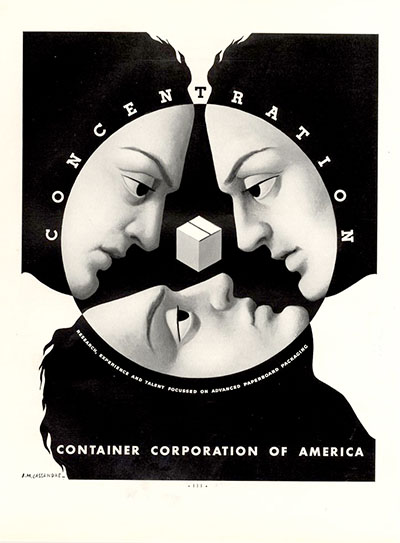
A. M. Cassandre, Concentration, 1937
The ads were intended to differentiate the CCA from its competition through the use of modern art, or, as Elizabeth said “to associate the company with design excellence.” The campaign, which downplayed the company through the limited use of copy, completely ignored the ‘rules’ of conventional print advertising and became a critical and commercial success. Jacobson and Paepcke followed these early ads with the United Nations series (1944) and the United States series (1947):
Paul Rand, US, 1945, original gouache. SI 2
Sydney Butchkes, Kentucky, 1947 and Ben Cunningham, Nevada, 1949
Paepcke had something of a cultural awakening following the war. In 1946 he and Elizabeth began attending Mortimer Alder and Robert Hutchins’ now famous Great Books discussion group (the so-called Fat Man’s group) and found that studying the classics was the antidote for “the feverish rainbow-chasing and disillusionment characteristic of American life today.” Alder and Paepcke went on to collaborate on the Goethe Bicentennial celebration in 1949 and to found the Aspen Institute a year later.
It was Elizabeth’s idea to follow up the United States series with a series based on quotes from the classics – The Great Ideas of Western Man. Alder supplied the quotes from his Syntopicon3 and a committee consisting of Herbert Bayer, Elizabeth and representatives from the CCA’s advertising agency, assigned the quote to an artist. Aside from CCA’s name and logo, there would be no ad copy at all. The series began in February 1950 with a quote from Alexander Hamilton illustrated by Arthur Williams.
No. 5: Ben Shahn on John Locke, 1950
No. 37: Max Bill on Justinian
No. 40: Alvin Lustig on John Ruskin
No. 45: Jan Tschichold on John Stuart Mill
According to Bayer selecting the artists was the most difficult part of the process and often resulted in spirited arguments among the committee. Once chosen, however, the artists were given complete license with the only stipulation that the artwork somehow relate to the quote. Bayer managed to commission a nearly encyclopedic roster of 20th century artists and designers to interpret, often unexpectedly, the canon of Western thought. The results transcended advertising.
Walter Paepcke wanted the ads to “serve [the] public interest as well as our own” and indeed, they attracted attention far beyond their intended audience. The CCA began producing folios and later a book to satisify the numerous reprint requests.
No. 72: Jacques Nathan Garamond on de Tocqueville, 1955
No. 88: Saul Bass on John Stuart Mill
No. 116: Rene Magritte on John Milton, 1958
No. 131: Herbert Bayer on Theodore Roosevelt, 1959
Under the design directors Egbert Jacobson, Ralph Eckerstrom and John Massey the Great Ideas campaign lasted 25 years and included more than 190 ads. On a shoestring budget the CCA managed to not only revolutionize institutional advertising, but created perhaps the first great guerilla advertising campaign. The legendary David Ogilvy, who considered CCA's early ads “amateurish pretension” called the Great Ideas “the best corporate advertising ever to appear in print.”
No. 141: Charles Coiner on Marcus Manilius, 1961
No. 143: Alexey Brodovitch on Rousseau
No. 148: Art Kane on Albert Einstein, 1963
No. 157: Herbert Bayer on Alfred North Whitehead, 1964
Of course ads were not the only design efforts by the CCA and that’s part II.
1. For a history of the Paepcke family and the company see: Ruth, Greg. “Walter Paul Paepcke.” In Immigrant Entrepreneurship: German-American Business Biographies, 1720 to the Present, vol. 4 (online).
2. In 1984 the CCA donated their art collection to the Smithsonian’s National Museum of American Art. For an overview see: Harris, Neil. Art, Design, and the Modern Corporation. Washington, D.C.: Smithsonian Institution Press, 1985 (WorldCat). Much of the collection is online.
3. In 1952 Encyclopedia Britiannica published Alder’s monumental Great Books of the Western World series: 431 works by 71 authors in 54 volumes covering eyerything from Aristotle and Homer to Pascal and Darwin. For the project Alder created a 2-volume list of 102 core ideas of the Western canon and arduously cataloged their appearance in the series. It was far more than an index and Alder coined the name Synopticon (meaning a collection of topics).
4. Massey, John (ed). Great Ideas. Chicago: Container Corporation of America, 1976 (WorldCat). The images here are scanned from the book.
27 Aug 2013 ‧ Design
